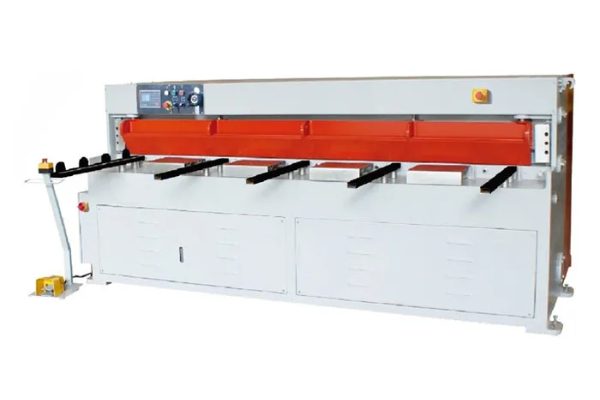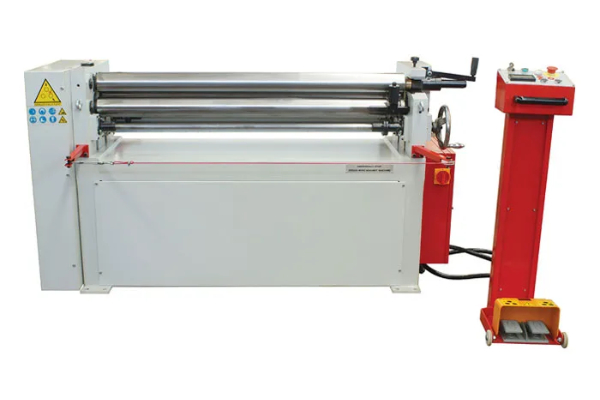
The Future of Metal Forming- Trends in Cold Roll Forming Machines
- By:Metmac
- 2024-09-06
- 88
As technology advances, the field of metal forming is undergoing a remarkable transformation. Cold roll forming machines, a vital component in the manufacturing process, are evolving to meet the demands of the 21st century. In this article, we explore the cutting-edge trends that are shaping the future of these machines.
1. Digitalization and Smart Manufacturing:
The advent of Industry 4.0 has brought a wave of digitalization to the metal forming industry. Cold roll forming machines are now being equipped with advanced sensors, control systems, and data analytics software. This enables real-time monitoring, predictive maintenance, and optimization of machine performance.
2. Automation and Advanced Control:
Automation is playing an increasingly significant role in metal forming. Cold roll forming machines are integrating robotic systems, automatic loading and unloading mechanisms, and vision-guided inspection systems. These advancements reduce labor costs, enhance accuracy, and improve throughput.
3. Increased Flexibility and Production Efficiency:
Today’s cold roll forming machines are designed with greater flexibility to handle a wider range of profiles and materials. Rapid tooling changeovers, multi-pass forming, and variable speed drives allow for quick and efficient production of complex geometries.
4. Advanced Sensors and Quality Control:
Advanced sensors are being incorporated into cold roll forming machines to monitor critical parameters such as roll gap, temperature, and material thickness. This ensures consistent product quality and reduces the risk of defects.
5. Sustainable Manufacturing and Environmental Compliance:
The drive towards sustainability is influencing the design of cold roll forming machines. Energy-efficient components, water-based lubrication systems, and noise reduction technologies contribute to minimizing environmental impact.
6. Collaborative and Virtual Engineering:
Cloud-based collaboration platforms are enabling manufacturers and machine builders to work together on design and development. Virtual engineering tools allow for real-time simulation and optimization of cold roll forming processes, reducing lead times and improving product quality.
7. Predictive Analytics and Machine Learning:
Machine learning algorithms are being employed to analyze data from cold roll forming machines. This enables predictive maintenance, optimization of forming parameters, and identification of potential bottlenecks.
:
The future of metal forming is bright with advancements in cold roll forming machines. These machines are becoming more digital, automated, flexible, and efficient. As the industry continues to innovate, we can expect to see even more groundbreaking trends emerging in the years to come. By embracing these trends, manufacturers can unlock new possibilities in metal forming and gain a competitive edge in the global marketplace.
-
The Advantages of Using a Sheet Roll Forming Machine in Manufacturing
2024/09/14 -
How to Optimize Your Laser Sheet Cutting Machine for Maximum Performance
2024/09/12 -
How to Maximize Efficiency with Modern Sheet Metal Working Machines
2024/09/04 -
The Environmental Benefits of Using Duct Board Grooving Machines
2024/09/03
-
Efficient Laser Cutting Machines for Steel Plate and Sheet Metal Fabrication
2025/07/03 -
Versatile Sheet Metal Machinery for Precision Fabrication
2025/07/03 -
High-Quality Sheet Metal Laser Cutting Machines for Modern Fabrication
2025/07/03 -
High-Precision Sheet Metal Equipment for Modern Manufacturing
2025/06/28
-
A Guide to the Latest Innovations in Sheet Metal Folding Machines
2024/11/29 -
Key Features to Consider When Investing in a Sheet Metal Folding Machine
2024/11/28 -
Enhancing Precision with Advanced Sheet Metal Folding Machines
2024/11/27 -
How to Choose the Right Sheet Metal Folding Machine for Your Workshop
2024/11/26



